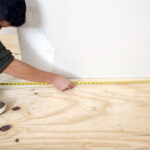Everything You Need to Know About “Pool’s Main Drain”Swimming pools are a fantastic addition to any home, providing a great way to relax, exercise, and entertain. One of the critical components of any pool is the main drain.
This feature plays a vital role in maintaining the pool’s cleanliness and overall functionality. In this comprehensive guide, we will delve into everything you need to know about the pool’s main drain, covering its purpose, components, maintenance, safety considerations, and more.
1. Purpose of the Main Drain
The main drain in a swimming pool is a crucial part of the pool’s circulation system. It is typically located at the deepest part of the pool and serves several essential functions:
- Water Circulation: The main drain helps ensure proper water circulation throughout the pool. It works in conjunction with the skimmers and returns to create a balanced flow of water, which is vital for evenly distributing chemicals and maintaining water clarity.
- Debris Removal: The main drain assists in removing debris that sinks to the bottom of the pool. This includes leaves, dirt, and other particles that can accumulate over time. By drawing water from the pool’s floor, the main drain helps keep the water clean and clear.
- Preventing Stagnation: Without a main drain, the water at the bottom of the pool can become stagnant. Stagnant water can lead to algae growth, unpleasant odors, and poor water quality. The main drain helps prevent these issues by ensuring continuous movement of the water.

2. Components of the Main Drain
A pool’s main drain consists of several key components:
- Drain Cover: The visible part of the main drain is the drain cover. It is designed to prevent large debris and objects from entering the drain while allowing water to flow freely. Modern drain covers are also designed with safety in mind, reducing the risk of entrapment.
- Sump: The sump is the housing or well that contains the main drain. It is typically embedded in the pool’s floor and connected to the plumbing system.
- Piping: The piping connects the main drain to the pool’s pump and filtration system. It is usually made of PVC and is designed to withstand the pressure of water flow.
- Valve: Some pools have a valve that allows the pool owner to control the flow of water from the main drain. This can be useful for maintenance and troubleshooting.
3. Maintenance of the Main Drain
Proper maintenance of the main drain is essential to ensure the longevity and functionality of your pool. Here are some maintenance tips:
- Regular Cleaning: Periodically inspect and clean the main drain cover to remove any debris that may have accumulated. This helps maintain optimal water flow and prevents clogging.
- Check for Damage: Inspect the main drain cover and sump for any signs of damage or wear. Cracks, broken parts, or loose fittings should be repaired or replaced promptly to avoid potential issues.
- Monitor Water Flow: Keep an eye on the water flow from the main drain. If you notice a significant decrease in flow, it could indicate a blockage or other problem that needs to be addressed.
- Professional Inspection: It’s a good idea to have a professional pool technician inspect the main drain and related components as part of your regular pool maintenance routine. They can identify and address any issues that may not be immediately apparent.
4. Safety Considerations
Safety is paramount when it comes to pool main drains. Entrapment hazards have led to strict regulations and guidelines to ensure swimmer safety. Here are some key safety considerations:
- Anti-Entrapment Covers: Modern pools are required to have anti-entrapment drain covers that comply with the Virginia Graeme Baker Pool and Spa Safety Act (VGB Act). These covers are designed to prevent suction entrapment, reducing the risk of drowning.
- Dual Main Drains: Many pools are now equipped with dual main drains spaced apart. This design reduces the suction force at any single drain, further enhancing safety.
- Suction Release Systems: Some pools have suction release systems that automatically shut off the pump if a blockage or entrapment is detected. This can provide an additional layer of protection.
- Regular Inspections: Regularly inspect the main drain cover and surrounding area for any damage or wear. Replace damaged covers immediately to maintain safety.
5. Troubleshooting Common Issues
Despite regular maintenance, issues with the main drain can still arise. Here are some common problems and troubleshooting tips:
- Clogged Drain: If the main drain becomes clogged, you may notice reduced water flow or difficulty maintaining water clarity. To address this, you can use a pool vacuum or a drain snake to clear the blockage. In some cases, you may need to call a professional.
- Air in the System: Air can sometimes enter the plumbing system through the main drain, causing the pump to lose prime. To fix this, check for leaks in the plumbing and ensure all connections are tight. Bleeding the air from the system may also be necessary.
- Leaks: Leaks in the main drain or its plumbing can lead to water loss and other issues. If you suspect a leak, you can perform a dye test to identify the source. Repairing or replacing the affected components may be required.
6. Upgrading Your Main Drain
If you have an older pool, upgrading the main drain to meet current safety standards is highly recommended. Upgrading can include:
- Installing VGB-Compliant Covers: Ensure your main drain covers are compliant with the VGB Act to enhance safety.
- Adding a Second Main Drain: If your pool only has one main drain, consider adding a second one to improve circulation and safety.
- Installing a Suction Release System: Adding a suction release system can provide additional protection against entrapment.
7. Conclusion
The main drain is an essential component of any swimming pool, playing a crucial role in maintaining water quality, circulation, and safety. Proper maintenance and adherence to safety standards are vital to ensure the drain functions effectively and safely. By understanding the purpose, components, and maintenance requirements of the main drain, pool owners can enjoy a clean, safe, and enjoyable swimming experience.
Investing time and effort into maintaining your pool’s main drain will pay off in the long run, ensuring your pool remains a safe and inviting place for you, your family, and your friends.
Read Also.How to drain a rheem water heater?

